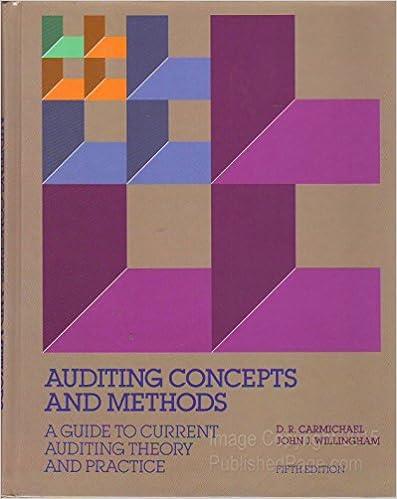The following questions relate to audit procedures for long-term obligations and stockholders' equity. a. The auditor can
Question:
The following questions relate to audit procedures for long-term obligations and stockholders' equity.
a. The auditor can best verify a client's bond sinking fund transactions and year-end balance by
1. Confirmation with the bond trustee.
2. Confirmation with individual holders of retired bonds.
3. Recomputation of interest expense, interest payable, and amortization of bond discount or premium.
4. Examination and count of the bonds retired during the year.
b. The primary reason for preparing a reconciliation between interest-bearing obligations outstanding during the year and interest expense presented in the financial statements is to
1. Assess control risk for securities.
2. Determine the validity of prepaid interest expense.
3. Ascertain the reasonableness of imputed interest.
4. Detect unrecorded liabilities.
c. During the year under audit, a company has completed a private placement of a substantial amount of bonds. Which of the following is the most important step in the auditor's program for the examination of bonds payable?
1. Confirming the amount issued with the bond trustee.
2. Tracing the cash received from the issue to the accounting records.
3. Examining the bond records maintained by the transfer agent.
4. Recomputing the annual interest cost and the effective yield.
d. All corporate capital stock transactions should ultimately be traced to the
1. Minutes of the board of directors.
2. Cash receipts journal.
3. Cash disbursements journal.
4. Numbered stock certificates.
e. An auditor would be least likely to use confirmations in connection with the examination of
1. Inventories.
2. Long-term debt.
3. Property, plant, and equipment.
4. Stockholders' equity.
Step by Step Answer:

Auditing Concepts And Methods A Guide To Current Auditing Theory And Practice
ISBN: 9780070099999
5th Edition
Authors: Mcgraw-Hill





